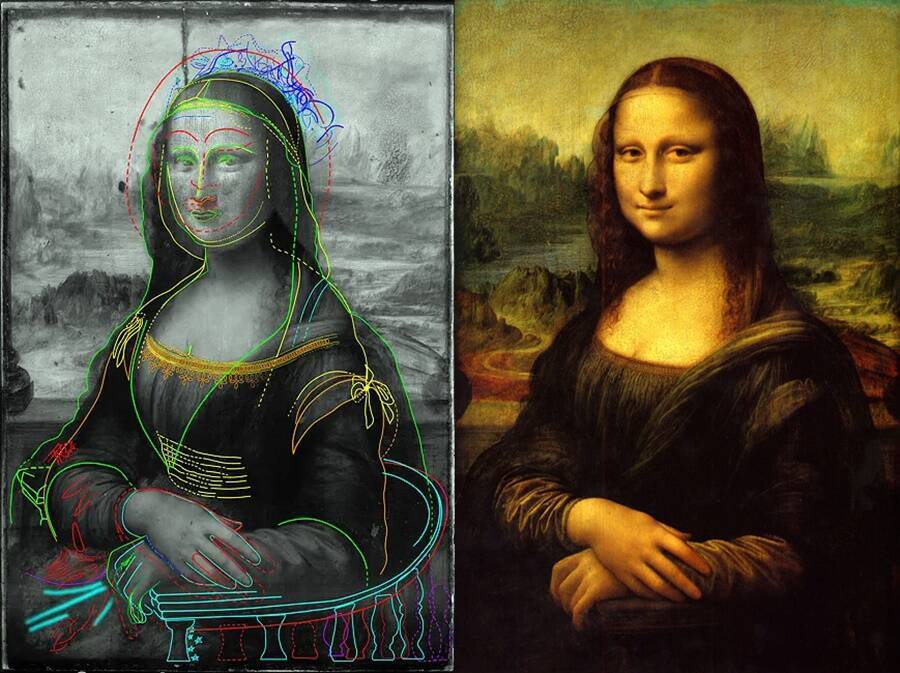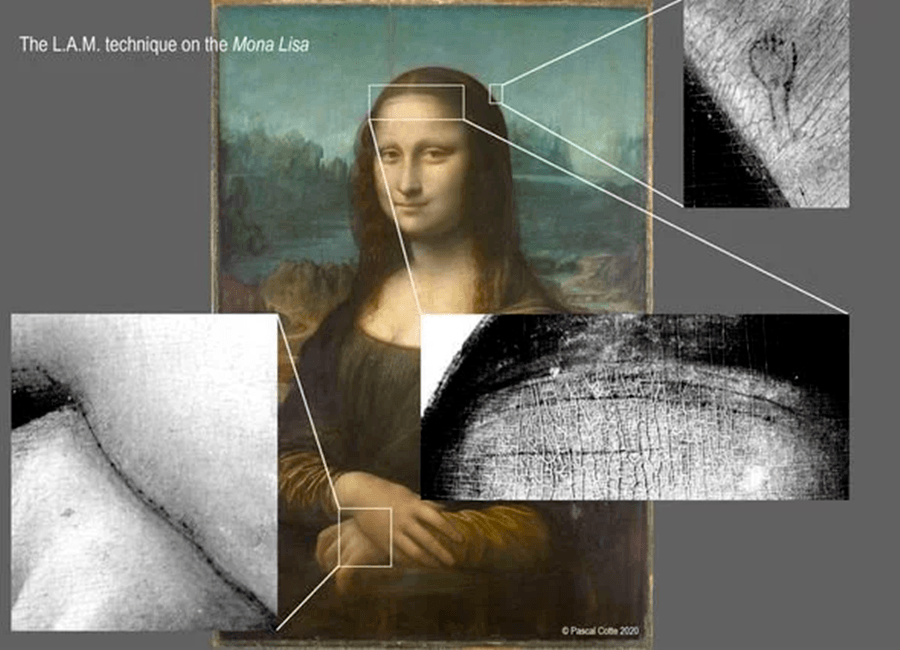Experts Find A Hidden Drawing Underneath The Mona Lisa

Pascal Cotte via artnet NewsA study 15 years in the making revealed a hidden drawing underneath the Mona Lisa’s surface.
It only took half a millennium to realize it was there. But in 2020 researchers made an exciting historical discovery — a secret drawing hidden beneath the Mona Lisa‘s final layer of paint. Scientist Pascal Cotte had studied Leonardo da Vinci’s masterpiece for more than 15 years when he unlocked this secret, after first setting out to do so in 2004.
“The Louvre invited me because I am the inventor of a new very high-resolution, highly sensitive multispectral camera,” he explained upon the announcement in September.
Indeed, it was his creation that revealed some of the most exciting history news of 2020. As detailed in a study published in the Journal of Cultural Heritage, Cotte’s Lumiere Technology camera utilized a layer amplification method (or LAM) which could detect light reflected on 13 individual wavelengths.
Though Cotte’s tool was built upon previous technology of infrared photography, his high-tech gadget was nonetheless capable of something new: detecting underlying charcoal lines beneath one of the most famous paintings in the history of the world.
“The optical system allows us to see the very fine details and the high sensitivity allows a very high amplification of low signal,” he said. “The spolvero on the forehead and on the hand betrays a complete underdrawing.”
The spolvero is a method used to transfer early sketches of a painting onto the final canvas. The artist first makes holes along the outlines of a sketch, then lays that drawing across a canvas and dusts a powder of charcoal through the holes to mark the outline.
Cotte’s examination of the Mona Lisa yielded the first time ever that a spolvero had been detected in the world-renowned work. This not only proved that da Vinci had made an earlier sketch — glimpses of it could be captured and presented to the public through the aforementioned journal. Such a discovery stands as a thrilling piece of history news in 2020.

Pascal Cotte via artnet NewsDetails of the high-tech scans revealed a hairpin on the woman’s head in the underdrawing.
Ultimately, the results showed that da Vinci had sketched a hairpin above the woman’s head — which wasn’t fashionable in Florence at the time of his creation. Even more intriguing is the suggestion that there are more historical discoveries to come, perhaps, like a sketch.
In terms of history news, this story proved that new technology can sweep away the curtain — and reveal to us what’s been in front of our faces the entire time.





